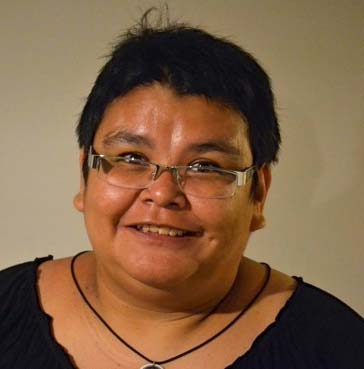
Hello, my name is Christine Smith (McFarlane). I am a Canadian First Nations journalist and writer who hails from Peguis First Nation, which is one of Manitoba's largest reserves. Though I never grew up on my reserve due to being a part of the Canadian's history of Native children being apprehended from their families and communities, (known as the Sixties Scoop) I have since returned to my people. I write about issues that are close to my heart -- issues that will hopefully bring about awareness of what is happening with Canadian First Nations, because knowing your story, your truth and following it is something that can make us all better.
What do you think of when you hear about Canadian First Nations people? Do you ask yourself: are they the same as American Indians? Do they face the same issues that American Indians are confronted with? I'm talking about racism, discrimination, and cultural oppression. Or what about the assimilationalist policies that are put in place by the mainstream government, and the misrepresentation as peoples when it comes to film, media, and fashion?
As a First Nations writer here in Toronto, Canada, it can still be considered rare to hear a First Nations voice in the mainstream press. I started my writing career writing for First Nations news outlets. I have written for various First Nations newspapers, like Anishinabek News, the Native Journal, First Nations House Magazine, Windspeaker, and I write a blog that focuses primarily on First Nations issues. It can be seen at CHRISTINE'S BLOG. I have started writing for other places, but this is the first time I am venturing into writing for Piker Press, in what I would consider a mainstream media venue.
My work has mainly focused on bringing forth healing and positive representation of my peoples, because in the mainstream media, we are often depicted in stereotypical and hurtful ways. I want non-native people to see my peoples as the rich and diverse peoples they are, and for them to see that we as First Peoples have a lot to offer to the world around us. This is evident in our culture, languages, traditions and worldview.
My first column will be about explaining who the First Nations of Canada are. We are a large group of people, and are recognized under three umbrellas of names by the Canadian government. These are the First Nations, Inuit and Metis peoples. First Nations are the indigenous peoples of North America. Inuit are the original habitants of the Arctic regions, and the Metis people came after First Nations and Europeans had children together. We are not all the same, like some people are led to believe.
Our culture or way of life varies with each nation. Our stories and legends that have been passed down to us from our Elders have taught us how the world came to be and that we are a part of the whole of creation. We are taught to live the "good life" (piimaatsiwin). This is where we believe that our values and traditions are gifts from the Creator, and that as a people we should live in harmony with the natural world and all it contains.
When European contact happened, our way of being was discredited and seen as inferior. A lot of our languages, traditions and spiritual practices were banned. Not to mention the fact that families were destroyed when government assimilationist policies ripped children away from their families and communities and sent them away to residential schools.
In the Western worldview, scientists believe that we came over the Bering Strait around ten to thirty thousand years ago. The Bering Strait theory is highly contested and brings about a lot of anger to First Nations peoples. It is a theory that goes against how we believe we came to be, and discredits the oral histories we have learned from our ancestors and incorporated into our lives.
However, for the purposes of studying traditional First Nations cultures, historians have tended to group First Nations in Canada according to the six main geographic areas of the country, as it exists today. Within these six areas, First Nations had similar cultures and traditions that were largely shaped by the environment in which they lived.
According to the Aboriginal Affairs and Northern Development "The six groups were: Woodland First Nations, who lived in dense boreal forest in the eastern part of the country; Iroquoian First Nations, who inhabited the southernmost area, a fertile land suitable for planting corn, beans and squash; Plains First Nations, who lived on the grasslands of the prairies; Plateau First Nations, whose geography ranged from semi-desert conditions in the south to high mountains and dense forest in the north; Pacific Coast First Nations, who had access to abundant salmon and shellfish and the gigantic red cedar for building huge houses; and the First Nations of the Mackenzie and Yukon River Basins, whose harsh environment consisted of dark forests, barren lands and the swampy terrain known as muskeg." (See First Nations in Canada.)
When it came to how the early First Nations lived, their social organization, food resources, and homes, modes of transportation and clothing as well as spiritual beliefs were widely shared. This all changed upon contact though, and fractured alliances. With European exploration and migration, the First Nations of Canada lives were radically changed and altered.
Canada exists as a commonwealth nation founded in colonialism, which has at times been motivated by greed and fraud, serving many injustices to its First Peoples, just as its counterparts in the Americas. As a people, we First Nations are strong and resilient, and this is what I would like to focus on in future columns.

01/29/2014
04:05:04 AM